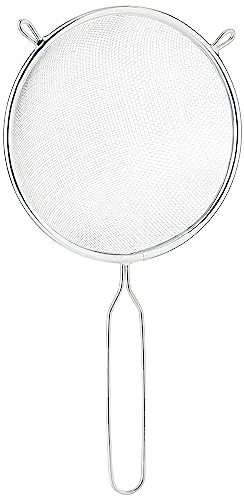Yes, there are different sizes of sieves available
Sieves are tools used to separate solids from liquids or to fractionize granular materials. They consist of a mesh screen that allows smaller particles to pass through while retaining larger particles. Sieves are commonly used in industries such as agriculture, construction, and pharmaceuticals. They are available in various sizes to accommodate different applications and particle sizes.
Understanding sieve mesh sizes
Sieve mesh sizes refer to the number of openings per linear inch in the mesh screen. The size of the particles that can pass through the sieve is determined by the mesh size. The higher the mesh number, the smaller the particle size that can pass through. Conversely, the lower the mesh number, the larger the particle size that can pass through.
Sieve sizes and their applications
Sieves are available in a range of sizes, typically measured in inches or millimeters. Common sieve sizes include 3″, 4″, 6″, 8″, 10″, 12″, and 18″. The choice of sieve size depends on the desired particle size distribution and the specific application.
Choosing the right sieve size
When selecting a sieve size, it is important to consider the purpose of the sieve and the characteristics of the material being sieved. For example, if the goal is to remove large particles from a sample, a sieve with a larger mesh size would be appropriate. On the other hand, if the goal is to obtain a fine powder, a sieve with a smaller mesh size would be required.
The size of the sieve used also affects the efficiency of the sieving process. Smaller mesh sizes may require more time and effort to sieve a given volume of material compared to larger mesh sizes. It is important to find a balance between achieving the desired particle size distribution and the practicality of the sieving process.
In conclusion, there are different sizes of sieves available to suit various applications and particle sizes. The mesh size of a sieve determines the size of particles that can pass through, with higher mesh numbers corresponding to smaller particle sizes. When choosing a sieve size, it is important to consider the specific application and the characteristics of the material being sieved. By selecting the appropriate sieve size, one can ensure the desired particle size distribution is achieved.






